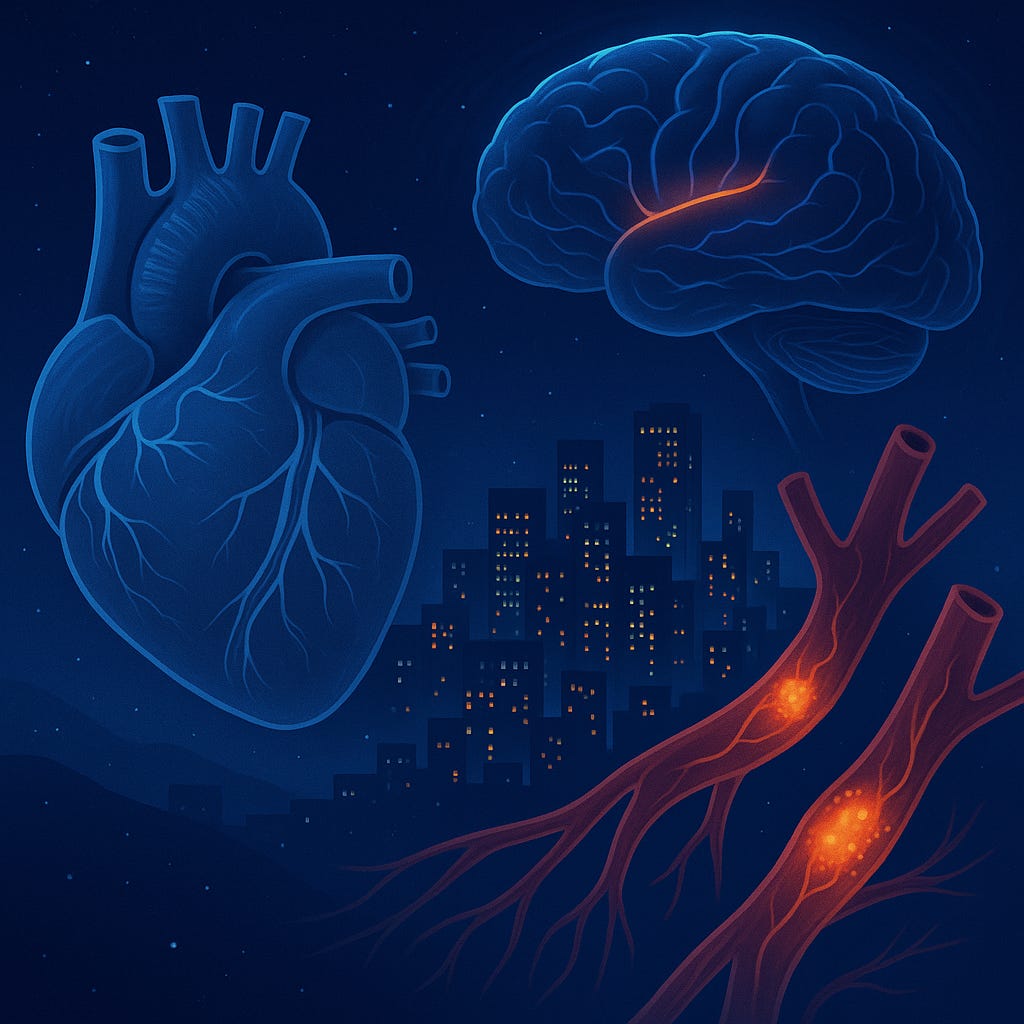Dark Night Habits Reduce Cardiovascular Risk from Light Exposure
How nighttime light may affect stress pathways and arterial inflammation
A new observational study from Massachusetts General Hospital suggests that long term exposure to artificial light at night may activate stress centers in the brain, increase arterial inflammation, and raise the risk of major cardiovascular events by 35 percent at 5 years and 22 percent at 10 years.
Study Details
Artificial light at night is now a routine part of modern life. Streetlights, indoor lighting, digital screens, and city glow all contribute to a level of brightness that can disrupt the body’s natural circadian rhythm. Prior research has connected nighttime light to metabolic problems and poor sleep, but its independent impact on cardiovascular disease has remained uncertain.
Researchers at Massachusetts General Hospital and Harvard Medical School analyzed data from 466 adults aged around 55 who underwent PET/CT imaging between 2005 and 2008. No participant had cancer or diagnosed cardiovascular disease at the start. The team used satellite based measurements from the New World Atlas of Artificial Night Sky Brightness to estimate each person’s light exposure based on home address.
Methodology
PET/CT imaging allowed the team to measure two biological pathways at once:
• Stress related neural activity, reflected by the amygdala to cortical activity ratio
• Arterial inflammation, measured using the aortic target to background ratio
Researchers then linked these imaging findings with follow up data over 10 years. Results were adjusted for traditional cardiovascular risk factors, income, noise, air pollution, and how urban the neighborhood was.
Key Findings
• Higher artificial light exposure was linked to higher stress related brain activity
• Higher light exposure correlated with greater arterial inflammation
• Individuals with the most light exposure had a 35 percent higher risk of a major cardiovascular event at 5 years
• At 10 years, risk remained elevated at 22 percent
• Other stressors like noise and socioeconomic deprivation did not explain the effect but added their own risks
• The study supports a potential biological pathway connecting nighttime light to heart disease through stress activation and inflammation
Implications for Practice
For patients:
Reducing nighttime light may help maintain healthier circadian rhythms and reduce stress signals that affect the heart. Simple changes may include:
• Blackout curtains
• Eye masks
• Lower brightness in bedrooms
• Dimming indoor lights in the evening
• Reducing screen use before bedtime
For clinicians:
This study highlights artificial light at night as an environmental factor that may independently contribute to inflammation related cardiovascular risk. Discussing nighttime light exposure during lifestyle counseling may be relevant for high risk individuals, especially those living in urban or brightly lit environments.
For public health and municipalities:
Urban planning strategies like shielding streetlights, reducing unnecessary outdoor lighting, and using motion sensitive lighting may help reduce population level exposure.


